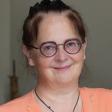Institute of Anatomy and Anthropology
Theatrum Anatomicum
Summary of scientific activities on RSU Research Portal
The Institute of Anatomy and Anthropology (IAA) at Rīga Stradiņš University (RSU), or the Theatrum Anatomicum, is the place where future physicians are forged; it is an essential stop on the road to becoming a physician. This is the place where the dead help the living, Hic locus est ubi mors gaudet, sucurrere vitae. The Theatrum Anatomicum is located in the former Greek Orthodox Seminary built between 1877 and 1879 and built according to the design of Baltic-German architect and academic Heinrich Karl Scheel (1829 –1909).

The IAA was established in late 1997 and documentation on its first activities were compiled and printed in the Institute of Anatomy and Anthropology publication of the Latvian Academy of Medicine/Rīga Stradiņš University in 2002.
The IAA is a structural unit of RSU without a separate legal personality operating in the fields of academics, research and medical diagnostics.
Main goals and objectives
- To ensure an integrated implementation of study programmes in anatomy, medical cell biology, histology, embryology and anthropology, as well as in morphological aspects of clinical subjects;
- To provide high-quality education in medical cell biology, anatomy, histology, embryology, and anthropology;
- To conduct morphological and anthropological research on humans;
- To perform morphological and anthropological clinical diagnostics and develop standards;
- To develop and approbate new research methods;
- To study the history of anatomy, medical cell biology, histology, embryology and anthropology sciences, as well as to take practical measures for preservation of evidence.
Main activities
- Implement a study process – lectures, seminars, practical classes, preparation of methodical training materials;
- Improve the content, materials and technical aspects of the didactic process of medical education;
- Implement research projects and provide support to research conducted by students at all study levels – diploma studies, graduate, post-graduate;
- Collect, study and display anatomical and embryological exhibits of the institute in exhibitions on this century’s legacy and historical materials in line with the institute's profile;
- Maintain and extend the material base required for morphological and anthropological studies and develop qualified personnel;
- Organise conferences, seminars, symposia and other events;
- Exchange creative experience with other RSU structural units as well as educational, therapeutic and scientific institutions in Latvia and abroad;
- Coordinate the institute’s activities with associated research projects and science directions in Latvia;
- Regularly present the institute's research results at international and local scientific conferences, as well as publish reserach in scientific magazines and internationally referenced databases;
- Inform the public about the institute's activities in the mass media, attract new students, organise excursions to the various expositions at AAI for general and specialised secondary schools and high schools.
Employees
Institute of Anatomy and Anthropology
Related news
 Latvian Conference on Rare Diseases to be held at RSU for 18th yearFor Students, For RSU Employees, Conferences, workshops, Research, Traditional Events
Latvian Conference on Rare Diseases to be held at RSU for 18th yearFor Students, For RSU Employees, Conferences, workshops, Research, Traditional Events Highest state decorations awarded to RSU professionalsFor Students, For RSU Employees, Recognition
Highest state decorations awarded to RSU professionalsFor Students, For RSU Employees, Recognition Medical visionary Dr. Meskó: Artificial intelligence will improve the doctor-patient relationshipRSU in the news, Conferences, workshops, Research, International Cooperation, Traditional Events
Medical visionary Dr. Meskó: Artificial intelligence will improve the doctor-patient relationshipRSU in the news, Conferences, workshops, Research, International Cooperation, Traditional Events The most significant scientific event of the year, RSU Research Week, has concludedResearch, Traditional Events
The most significant scientific event of the year, RSU Research Week, has concludedResearch, Traditional Events Discussion on military and diplomatic tools assesses international securityFor Students, For RSU Employees, Conferences, workshops, Research, Traditional Events
Discussion on military and diplomatic tools assesses international securityFor Students, For RSU Employees, Conferences, workshops, Research, Traditional Events














